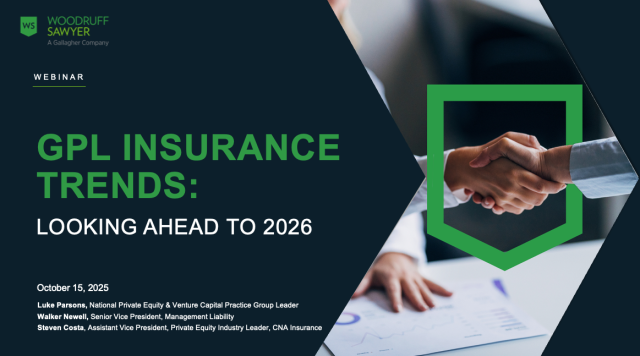Blog
Expanding Retail Investor Access to Private Funds: A Spider-Man Problem
Private funds could be facing a Spider-Man problem. Let me explain.
Because he was bitten by a radioactive spider, Spider-Man has superpowers. He can jump really high. He can shoot webs from his hands. When his Spidey-Sense is tingling, he knows something bad is about to happen.

Spider-Man works hard to leverage his powers for good. He beats up bad guys and stops bad things from happening to good guys.
But, as our hero is reminded by his wise Uncle Ben, “With great power comes great responsibility.”
Spider-Man can’t hang out in his apartment eating Hot Cheetos. He has a big, heavy moral duty to use his power responsibly. So, while it is fun that he can swing through the sky, he spends most of his time putting himself at risk by battling villains.
For decades, private funds have been generally restricted from taking money from non-accredited retail investors (and, by the way, they have done pretty darn well over that same period). Think of them as Peter Parker before he became Spider-Man (not a great analogy, but stick with me here).
A Radioactive Spider Moment
Today, new leadership at the Securities and Exchange Commission (SEC) seems poised to expand retail investor access to private funds.
|
Financial innovation sometimes means getting out of the way of capital formation and allowing all investors to gain the benefits of our robust markets. Since 2002, the SEC staff has taken the position that closed-end funds investing 15% or more of their assets in private funds should impose a minimum initial investment requirement of $25,000 and restrict sales to investors that satisfy the accredited investor standard. As a result, many retail investors have missed out on opportunities to invest in closed-end funds that invest in private investment funds, like hedge funds and private equity funds. Much has changed since 2002 — including the growth of private markets and the increased oversight and enhanced reporting by both private fund advisers and registered funds. Indeed, in the last 10 years alone, private fund assets have almost tripled from $11.6 trillion to $30.9 trillion. Allowing this option could increase investment opportunities for retail investors seeking to diversify their investment allocation in line with their investment time horizon and risk tolerance. With this in mind, I intend to have the Commission address this situation and reconsider this 23-year-old practice concerning investments by closed-end funds in private funds. This common-sense approach will give all investors the ability to seek exposure to a growing and important asset class, while still providing the investor protections afforded to registered funds. We must consider and resolve important disclosure issues for these products, particularly for those that trade on exchanges, including conflicts of interest, illiquidity, and fees. |
To extend my tortured metaphor, this is the radioactive spider moment for private funds. If private funds are powerful now (they are), they will have superpowers if retail investor capital begins flowing in large amounts.
With Great Power Comes Great Responsibility
It’s undeniable that private markets—in which private funds play a critical role—have become increasingly important in recent years, while public markets have declined in importance.
Retail investors may have some indirect exposure to private equity and venture capital funds through, for example, pension fund investments, but accredited investor requirements have been criticized—to some extent, appropriately—for locking out mom-and-pop investors from most of the opportunities with the greatest upside potential.
But there are also some good reasons why regulators have been reluctant to encourage retail investor participation in private funds. Chair Atkins identified a few of them in his May speech, and they all come down to risk and disclosure.
Liquidity is a big issue. Small individual investors have a greater need for ready access to capital than wealthy individuals or institutional investors. A 10-year lock-up period doesn’t work. A variety of available structures, however, provide exposure to private funds while mitigating these liquidity concerns.
Fees and conflicts of interest are another. A large proportion of the SEC’s exam and enforcement activities in the private funds space are related to inadequate disclosures on these issues.
The risk from investing in funds that hold private portfolio companies without the same strict audit and disclosure requirements as public companies is another issue.
More broadly, if a river of retail capital begins to flow into this pool, as Chair Atkins acknowledged in his speech, the SEC will need to protect Main Street investors. And private funds will be saddled with great responsibility—and great future regulatory risks.
Don’t Ignore Your Spidey-Sense
Last year, private fund managers were facing down a raft of aggressive new disclosure requirements from the former SEC leadership. Those rules were struck down in court, and the current SEC leadership has a markedly different philosophy. With the added possibility of increased retail capital flows through registered closed-end funds, the next few years look like green fields for private fund managers.
In the debate over the Private Fund Adviser Rules, Commissioner Hester Peirce—a reliable proxy for the dominant perspectives at the current SEC—acidly criticized Chair Gensler’s rationale for the rules by pointing out that sophisticated institutional investors have the ability to negotiate terms and police misbehavior by private fund managers.
Presumably, supporters of loosening accredited investor requirements will also point to intermediation by sophisticated institutions as a key protection for unsophisticated investors.
Regardless of the wrapper, though, with greater power to connect with retail investment dollars, private funds will want to tread very carefully. Over the next few years, if a new regulatory regime is indeed created, stay firmly on the right side of the line. When bad things happen to retail investors, regulators tend to have strong reactions.
On a longer time horizon, this will remain a generally contested space. No one knows where the political winds will blow in the future. For example, one possible future is that after access to private funds is expanded, a significant market downturn takes place and a new administration subsequently takes power. Under those conditions, private fund managers would likely be subject to significant scrutiny.
Again, an aggressive focus on compliance in this space makes very good sense. Then you can focus on vaulting over tall buildings.
Author
Table of Contents











